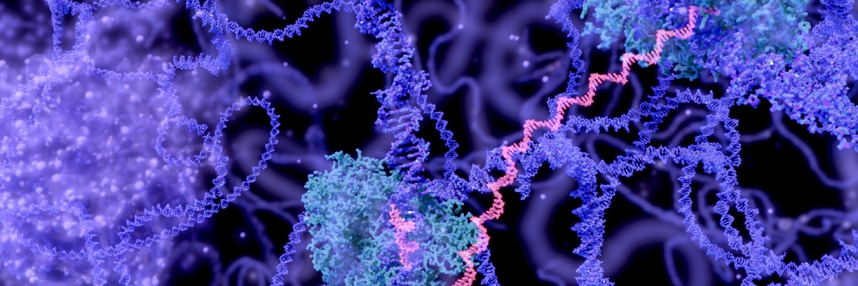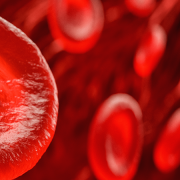RNA-based therapies: two types explained
What are RNA therapies and how are they used? We compare the two licensed types – antisense and RNA interference – to find out more
As technology continues to advance, new treatments are becoming available that allow us to control the expression of genes in order to better treat certain conditions. In this article, we look at two licensed types of therapy that work by targeting RNA, and explain how they are used in practice.
The function of RNA
RNA is closely related to DNA and is equally important to how our cells function. While our DNA encodes our genome, without RNA it would never be expressed.
One of the main functions of RNA is to act as a template for proteins to be made in the cell. These messenger RNAs (mRNA) copy a portion of genetic code from the chromosomal genome in the cell nucleus and transport the information to the ribosomes, which assemble the proteins to order.
Due to its pivotal role in protein creation, RNA is increasingly being used as a method to control gene expression. By targeting the mRNAs in a cell, it is possible to block harmful proteins from being produced without attempting to change the genome itself.
Two different types of RNA therapies have been licenced so far: ‘antisense’ and ‘RNA interference’. But how do they compare?
Antisense
Double-stranded RNA (dsRNA) is not produced as part of normal human cellular activity; however, it can be a sign of viral infection. Consequently, our cells recognise dsRNA as foreign and have evolved mechanisms to destroy it. Antisense therapies take advantage of this by getting the cell itself to destroy harmful RNAs.
These therapies take the form of short RNA sequences that are complementary to – and therefore bind to – a target mRNA. The mRNA is then identified as double stranded and is destroyed by the cell before the harmful protein can be produced.
An example of an antisense therapy in use in the NHS is nusinersen, which is used to treat spinal muscular atrophy (SMA). Antisense therapies are also being developed for conditions which have so far been resistant to drug therapies, such as Huntington disease.
RNA interference
Like antisense, RNA interference (RNAi) co-opts a naturally-occurring cellular pathway to target and destroy dsRNA, consequently blocking the expression of a disease-associated protein.
Instead of introducing a single-stranded RNA, RNAis use a double-stranded or hairpin-shaped RNA that is cut into short fragments by a cellular enzyme called Dicer. These fragments, called short interfering RNAs (siRNAs), then bind to another protein to form an RNA-induced silencing complex (RISC). The RISC will, in turn, attach to a complementary sequence on the target mRNA and form a double strand, which is then destroyed.
The drug patisiran is an example of an RNAi therapy, currently being used to treat hereditary transthyretin amyloidosis, and the first RNA-therapy approved in the US and Europe.
Comparing therapies
Antisense and RNAi therapies have similar benefits and drawbacks. Both use a lab-synthesised RNA sequence, which is simple and inexpensive to produce, and both have a high specificity with a low risk of off-target effects because the underlying gene is not changed.
However, because RNAs are transient and constantly being generated, these treatments need to be taken on an ongoing basis rather than as a one-off like some gene therapies.
The main limitation for both types of RNA therapies is delivery: getting the RNA molecules into target cells in sufficient concentrations to be effective. This has been a problem thus far for neurodegenerative conditions such as Huntington disease, where this kind of therapy has enormous potential.
–









